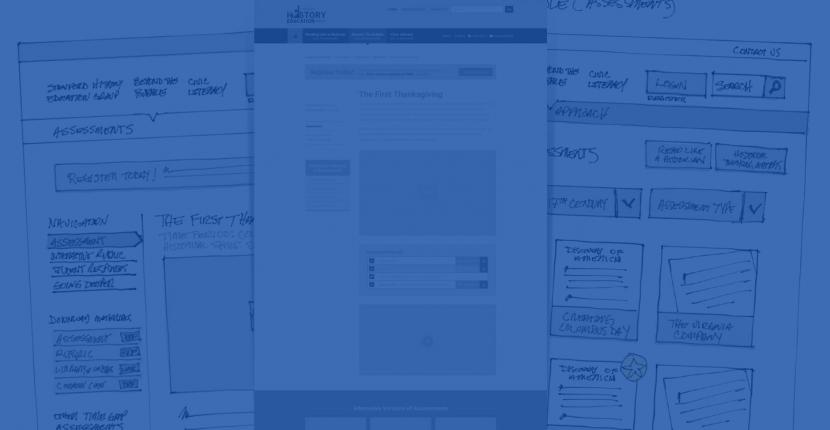
If you’re a consulting company, as Bluespark is--our international team specializes in building beautiful web sites using the Drupal CMS, with an emphasis on powerful user experience and design--you know that excellent work is necessary but not sufficient to achieve a great (or even a good) relationship with your client.
Ultimately, no matter how hard you work, it’s the relationship that will decide whether the project is a success -- or, more to the point, whether your client believes it was a success.
You’re probably already an expert at listening not just to what clients say, but what they don’t say. You’re an accomplished reader of subtext. You work to build trust because if your client isn’t comfortable, you know it’s going to be a lot harder to sell them on your ideas.
You also know that a great relationship doesn’t happen just by chance, and it’s not just because “they don’t question our bills and they pay on time” (though of course that’s something any service company wants).
No, a great relationship is the result of specific acts. And as you might imagine, it’s a two-way street. When it happens, it’s worth looking at what you and your client have done to make it happen.
So we have some ideas for you, whether you’re the client or the vendor.
FOR VENDORS
Become an extension of your client’s team.
People like to talk about this, but it doesn’t happen much. Why? Because vendors have strong ideas about what’s best for their clients. They have experience not only in their client’s industry but most likely in others as well, and they’re more up to date on the best technologies to achieve client goals. They know more (they assume) and so they’re prone to pressing the point on their ideas rather than finding a way to meet clients where they are.
When TripAdvisor, the world’s largest travel site, approached Bluespark looking to improve their existing Wordpress solution for communications with business owners, we felt sure that a Drupal-based solution would best achieve their aims. This was after all a marketing platform with heavy content management requirements reaching a global audience (and they wanted to increase the number of languages supported from 7 to 20).
We weren’t just thinking Drupal because that’s our core platform; we truly believed from the start that it was the best way to go. Nevertheless, we engaged in a comprehensive evaluation with TripAdvisor, providing any information they asked for, and we were willing to talk about Drupal’s limitations in the context of their goals, not just its advantages.
After this process, we jointly agreed that moving to Drupal would provide us with a more flexible framework to meet current and future needs. This wasn’t just performing listening exercises to stroke the client. This was serious work, and in the process we got to know their team, their various concerns, and the way they liked to communicate.
Once we got started on defining the actual project, we were already a tight knit team. We’d earned their trust by being honest. We continued to offer them all the resources they needed.
Be flexible on who does what.
TripAdvisor’s technical team handles implementations concerning the existing TripAdvisor stack, and they also handled the visual design. We brought to the table our UX expertise and the actual Drupal development. We constantly looked for ways to fit what we were doing to their needs.
Be responsive.
This may seem to be a given, but it’s not. One of the most common questions we field when talking with prospective clients, especially ones that have been burned by bad vendor relationships in the past, is, “How fast is your response time?”
Bluespark is an international, distributed team. This presented some challenge in terms of coordinating the regular progress meetings (at least weekly, sometimes more), but it also gave us an advantage--quite simply, we covered more of the clock. Team members in Europe had a head start on the US business day, which came in handy where updates were concerned.
Make your process transparent.
During the project lifecycle, some clients want more of a hands-on role than others. TripAdvisor, with its talented technical and design teams, had the wherewithal and the desire to be deeply involved in everything we worked on together.
So every step of the way, we figured out together how to do the work. We made no assumptions. We didn’t try to impose our process on them, but we were always willing to talk about how we work and what to expect.
With a project of this scale, even when every player on the team is extremely skilled, coordination and communication is what will ultimately determine success.
FOR CLIENTS
Demand the same level of organization from your own team that you expect from your vendor.
Let’s face it, TripAdvisor didn’t get to be the world’s largest travel site by hiring slackers. Their team is at the top of their game. They communicate expectations really well. They are always focused on keeping things on track. They are always, always prepared for meetings. There’s no drama and no one who has to be coddled.
In short, they demand the best--not just from us, but from themselves.
Know who the product owner is.
Do you know what can do the worst to a relationship--and a project? Lack of clarity with respect to who the ultimate decision maker is. Who gets to break the tie? Who bears final responsibility?
TripAdvisor always knows who this person is. After the TripAdvisor designers sign off on the visuals, we have someone who is clearly in charge to take the project from there. They are empowered to make decisions, or they are able to quickly come back to us with an answer.
Opt for a smaller core team.
TripAdvisor is a big company, and the work we’re doing with them reaches a global audience. But the total number of their people with whom we interact on a regular basis is three.
Aside from the designers, there are six or seven others with particular knowledge or expertise that will cycle in and out depending on current project needs.
On our end, it’s the same number--our Chief Technology Officer, Technical Director, and a Senior Developer. Other members of our team are brought in to handle specific pieces of work as needed.
So with two international companies (TripAdvisor being a bit bigger than we are, perhaps!) there is a core group of six people making the decisions and performing the work that reaches millions of people globally.
Conclusion
All this may come off as a love letter of sorts, and we’re OK with that. We love our work, and we love working with TripAdvisor, as well as all our other great clients (expect more love letters in the future).
Our hope is that you can put these ideas to work in your own client or vendor relationships.
Great relationships reinforce what’s best in you and support you in stretching your best even further. TripAdvisor has done that for us, and we like to think we’ve done the same for them.
We'd love to partner with you on your next project!
Since we’re big on relationships, we’re all about finding the right fit. Will you take the next step with us to see if we’re a match?





